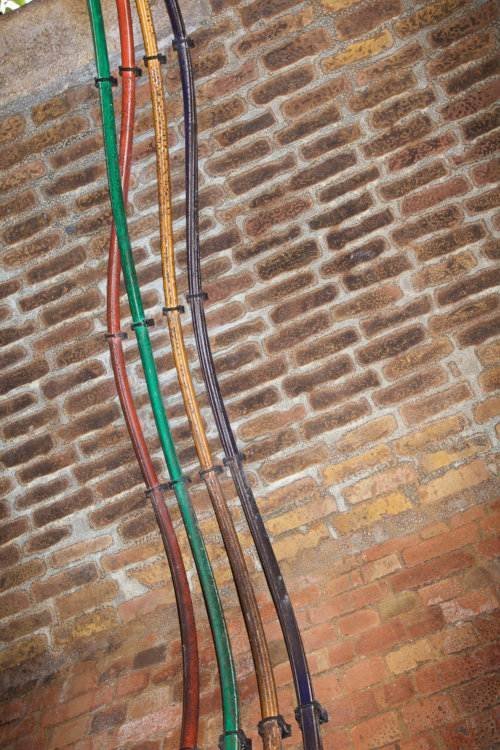![]() You don't need to be an 'investor' to invest in Singletrack: 6 days left: 95% of target - Find out more
You don't need to be an 'investor' to invest in Singletrack: 6 days left: 95% of target - Find out more
Seeing more of these now as barriers on motorways get switched to concrete. But what are the purple pipes for? Cables for lights? What?
Pumping dairy milk chocolate from Cadbury factory all over the country... 😉
(Was what i told my kids )
Roadworks or not? If in roadworks, there are lota of cables run along motorways. Lights, traffic monitors cameras etc. If in roadworks these are lifted up and set aside before they are broken.
HTH
This question seems to be asked more and more with the unknown purple ducting being placed on almost all new central reservation highway schemes throughout the UK.
The purple ducting is a secured protective ducting which contains cables which are known as NRTS. NRTS stands for National Roads Telecommunications Services and is operated by a company called GeneSYS Telecommunication Ltd.
The reason behind the NRTS project is to upgrade, operate and maintain communication systems that link the roadway communication devices along the motorways and other main ‘A’ roads. The devices operated by the NRTS consist of emergency telephones, CCTV, etc. and are linked to both the national traffic control and police control centres.
NRTS usually run along and underneath the verge of motorways, but with most motorway schemes carrying out construction works on the verges, the NRTS have had to be relocated temporarily to the central reservation.
Once a motorway scheme has been completed, the NRTS will be transferred back to the verge, and the temporary line in the central reservation removed.
Orange/Black is power i.e street lighting in this case, purple is data/comms (or power in Scotland), green is fibre-optics/TV (in urban areas anyway), grey/white is usually BT, blue is water, yellow is gas, anything metal is usually gas.
As well as allowing construction teams to dig up the verges with impunity, putting it in the middle allegedly also discourages the light-fingered elements of society from helping themselves but that could be an urban myth as some of the short-lived ones aren't scared of 110kV into a sub-station.
I prefer the Dairy Milk description.
Thanks!
Isn't it for the mice to live in once the grass has gone from the central reservation
Project - careful with your last point. A lot of lv and hv cables are in cast iron ducting.
Metal pipes can also be fuel/oil lines or slurry lines.
green is fibre-optics/TV (in urban areas anyway)
Most fibre is black in the street and under ground they're all sorts of colours:
Purple is highways/motorway comms.
Orange is traffic light cabling (not power)
Black or red is power depending on whether its low or high voltage.
Green is NTL/Cable (cables can be coax, fibre).
Grey is Openreach/BT (cables can be copper, coax, fibre).
Metal can be anything. Buried gas or water pipe, and BT has used cast iron in the past.
Cables within the ducts or fixed to walls can be any colour if telecoms/fibre, we use yellow and orange internally and black externally (to the untrained eye you can't tell fibre from copper - more recent fibre has a nice yellow stripe down it), some of the other telecoms used purple or orange external fibre cable.
